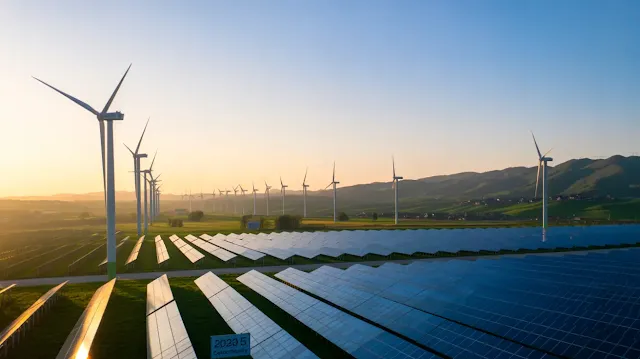China Leads Global Climate Action with Major Drop in Carbon Emissions
A Clean Energy Milestone in the First Quarter of the Year
China has taken a historic step forward in the global fight against climate change. During the first quarter of this year, the country recorded a notable decrease in carbon dioxide emissions, despite facing unusually high temperatures. This achievement is powered by the accelerated adoption of renewable energy sources, especially solar and wind power, which for the first time have outpaced fossil fuel-based electricity generation.
Unmatched Expansion of Renewable Energy in China
Wind and Solar Energy Surpass Coal Power for the First Time
According to recent data released by Ember, an independent energy think tank, China's renewable electricity generation reached nearly one thousand terawatt-hours in the first three months of the year. This represents an almost twenty percent increase year-over-year, setting a new benchmark in the nation's energy transition journey.
Wind energy alone contributed over three hundred terawatt-hours.Solar power soared by nearly half compared to last year, generating over two hundred fifty terawatt-hours.
Together, these two clean energy sources have outperformed traditional coal-fired plants for the first time in Chinese history, indicating a fundamental transformation in the country’s energy landscape.
Reduction in Fossil Fuel Dependence
Coal and Natural Gas Lose Ground
As renewable energy output surged, electricity generation from coal and natural gas declined. Coal usage dropped by approximately four percent, now accounting for less than sixty percent of China’s total electricity mix. Similarly, natural gas power generation also fell, contributing to a noticeable cut in carbon emissions.
This trend showcases China’s strategic efforts to phase out polluting energy sources, and invest in sustainable alternatives that offer long-term environmental and economic benefits.
Policy Backing and Political Willpower
President Xi Jinping Reaffirms Commitment to Clean Energy
While several global powers have shown signs of retreating from climate commitments, China has doubled down on its climate policies. President Xi Jinping publicly emphasized that China's environmental agenda "will not slow down, regardless of shifting international dynamics."
China has also announced plans to release a comprehensive set of climate targets before the upcoming COP30 climate summit in Brazil. These targets will cover all greenhouse gases, not just carbon dioxide, demonstrating a holistic approach to climate responsibility.
Global Implications of China’s Green Transition
Contrasting Trends in the West
Interestingly, while China is making headlines for cutting emissions, recent reports indicate rising energy-sector emissions in the United States and parts of Europe. This contrast puts China in a stronger position as a global leader in renewable energy and climate action, redefining traditional narratives about energy leadership in the twenty-first century.
Long-Term Vision for Sustainability
China’s Energy Future Powered by Innovation
The pace of clean energy deployment in China is expected to accelerate in the coming years. The government continues to invest heavily in renewable infrastructure, grid modernization, and smart energy systems. These developments are not only designed to boost domestic energy security but also to help meet international climate goals.
As China reduces its reliance on coal and fossil fuels, it sets an example for emerging and industrialized nations alike, proving that a sustainable energy future is both realistic and achievable.
Conclusion: China’s Role in Shaping the Future of Global Energy
The first quarter of this year marks a turning point for China’s climate journey. With renewable energy surpassing coal, and a significant drop in carbon emissions, the country is no longer just following global trends, it is setting them.
From strategic investments in solar and wind to strong political support and ambitious climate goals, China is paving the way for a cleaner, greener future, not just for itself, but for the planet.




Write a comment, your opinion matters to us